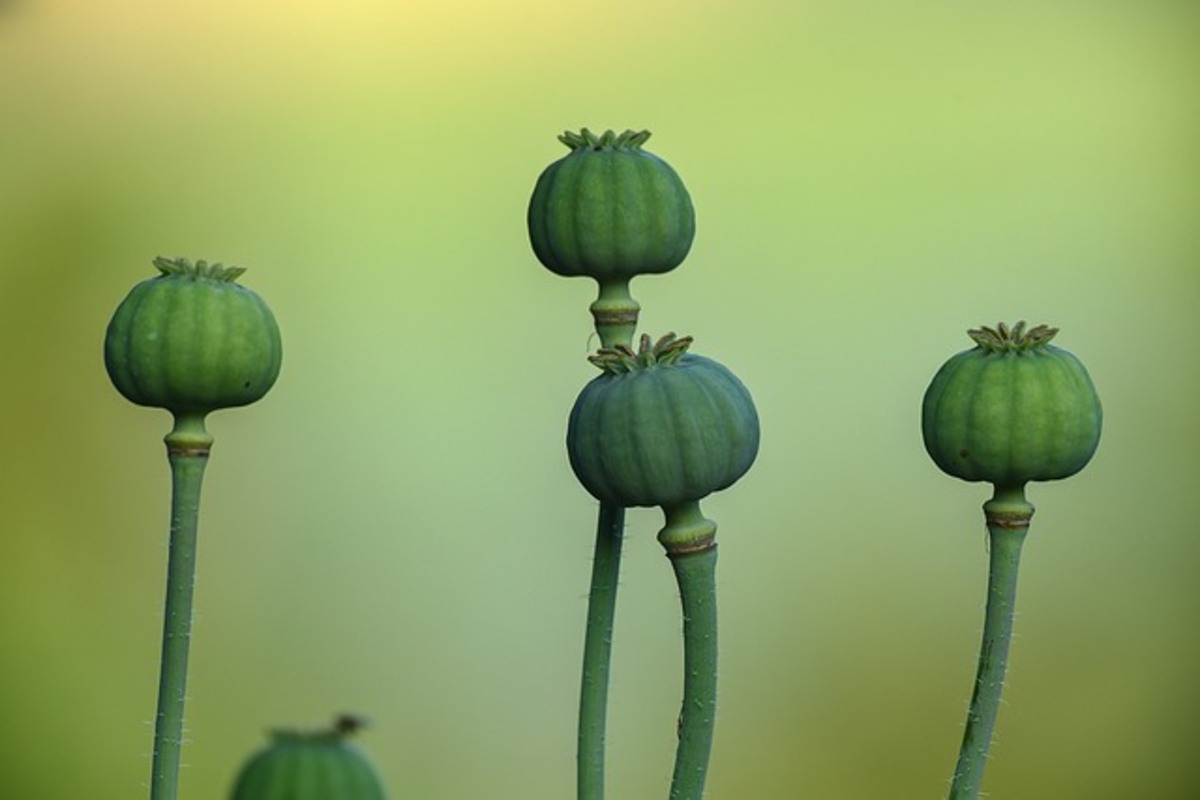Dried Poppy Pods: Legalities and Regulations Explained

If you’ve ever wandered through a craft store or stumbled upon a beautifully arranged bouquet, you might have come across dried poppy pods. These unique and eye-catching additions to dried floral arrangements have become quite popular, but there’s a lot more to them than meets the eye! Let’s dive into the world of dried poppy pods, exploring their uses and, most importantly, the legalities and regulations surrounding them in the USA. Often the Amazing fact about dried poppy pods usa.
What Are Dried Poppy Pods?
Dried poppy pods are the seed heads of the poppy plant, typically the Papaver somniferum variety. These pods, once dried, are used in various crafts and floral arrangements due to their unique texture and aesthetic appeal. They bring an earthy and rustic vibe to any creation, making them a favorite among DIY enthusiasts and florists alike.
Botanical Background
The Papaver somniferum, commonly known as the opium poppy, is an herbaceous annual plant with a rich history. It is native to the Mediterranean region but has been cultivated worldwide for centuries. The plant produces large, showy flowers that develop into seed pods, which contain numerous tiny seeds. These seeds have culinary uses, while the pods themselves are prized for their distinctive appearance in artistic projects.
Visual Appeal
The visual appeal of dried poppy pods lies in their unique shape and texture. The pods have a spherical form with a crown-like top, making them stand out in any arrangement. Their muted, natural color palette—ranging from soft browns to grays—blends seamlessly with other dried floral elements, adding depth and interest to creative designs.
Cultural Significance
Throughout history, poppy plants have held significant cultural symbolism. In various cultures, poppies are associated with themes of remembrance, peace, and sleep. This cultural backdrop adds layers of meaning to their use in art and decoration, making dried poppy pods not only visually appealing but also rich in historical and symbolic context.
Uses of Dried Poppy Pods
Dried poppy pods are versatile components in the crafting and floral design world. Their unique texture and shape lend themselves to a variety of creative applications, each offering different ways to explore artistic expression.
Floral Arrangements
Dried poppy pods add a distinctive touch to floral arrangements. Their neutral color and interesting shape complement a variety of other dried flowers and greenery, creating a balanced and visually appealing display. Whether it’s a wedding bouquet or a home centerpiece, these pods can elevate the overall look.
Wedding Bouquets
Incorporating dried poppy pods into wedding bouquets can add an unexpected element of elegance. Their neutral tones provide a contrast to vibrant blooms, creating a sophisticated balance. Brides seeking a rustic or bohemian vibe often choose these pods to enhance the natural theme of their arrangements.
Home Decor
Using dried poppy pods in home decor allows for creative exploration. They can be arranged in vases, added to wreaths, or used in wall hangings to create a cozy, earthy atmosphere. The pods’ natural aesthetic complements various interior styles, from minimalist to eclectic.
Seasonal Displays
Dried poppy pods are perfect for seasonal displays, offering a touch of nature’s beauty year-round. During autumn, they pair well with pumpkins and gourds, while in winter, they complement pinecones and evergreens. Their versatility makes them a staple in seasonal decorating.
Craft Projects
Beyond floral arrangements, these pods are also used in various craft projects. From wreaths to potpourri, the possibilities are endless. They can be painted, glittered, or left natural, depending on the desired effect. Crafting with dried poppy pods is a fun way to unleash your creativity!
Wreath Making
Crafting wreaths with dried poppy pods allows for endless creativity. Whether for a front door or as a decorative wall piece, these pods add texture and depth. Combining them with other dried botanicals like eucalyptus or lavender can create stunning, aromatic wreaths.
Potpourri Creations
Adding dried poppy pods to potpourri mixes enhances their visual appeal and aromatic presence. When combined with fragrant elements like dried rose petals, cinnamon sticks, and cloves, the pods contribute to a sensory experience that is both visually and olfactory pleasing.
Artistic Sculptures
For those inclined towards more sculptural art forms, dried poppy pods can be used to create intricate sculptures or installations. Their rigid structure allows for stacking, gluing, or wiring into complex designs. This opens a world of possibilities for artists looking to experiment with natural materials.
Legalities and Regulations in the USA
Now, here’s where things get a bit tricky. While dried poppy pods are commonly used for decorative purposes, they originate from the opium poppy plant, which is a controlled substance in many countries, including the United States. Let’s break down the legal considerations you need to be aware of.
Is It Legal to Buy or Sell Dried Poppy Pods?
In the USA, the legality of dried poppy pods is a bit of a gray area. While the pods themselves are not illegal, the opium poppy plant is considered a Schedule II controlled substance under the Controlled Substances Act due to its potential for abuse and the production of opium.
Understanding Schedule II Classification
The classification of the opium poppy as a Schedule II substance is due to its potential for misuse and its recognized medical benefits, albeit under strict regulation. This classification impacts the legal status of its derivatives, including dried poppy pods, making their trade a subject of scrutiny.
Decorative Use vs. Consumption
While purchasing and selling dried poppy pods for decorative purposes is generally permissible, they mustn’t be intended for consumption. The ambiguity arises because the same pods could be used illicitly. Hence, transparency about their intended use is vital to remain within legal boundaries.
Reputable Sources
When engaging in the trade of dried poppy pods, sourcing them from reputable vendors is essential. Reputable sellers ensure that the pods are harvested legally and are not diverted for illegal uses. This not only protects buyers legally but also supports ethical trade practices.
Growing and Harvesting Opium Poppies
Growing opium poppies in your backyard might sound like a fun gardening project, but it’s important to know the legal implications. In the United States, it is illegal to cultivate the Papaver somniferum plant without a special license due to its potential for drug production. So, if you’re thinking of growing them for their beautiful blooms or pods, it’s best to look for other legal alternatives.
Licenses and Permits
Cultivating opium poppies legally requires obtaining specific licenses and permits. These are typically granted for research or pharmaceutical purposes, not personal or decorative use. Navigating the bureaucratic process to obtain these permits can be complex and is generally not feasible for casual gardeners.
Alternatives for Gardeners
For those interested in growing poppies without the legal hassle, there are alternative varieties to consider. Ornamental poppies, such as Papaver rhoeas (corn poppy) or Papaver orientale (Oriental poppy), offer similar visual appeal without the legal restrictions. These varieties are ideal for gardeners seeking vibrant blooms without legal concerns.
Legal Consequences
Engaging in the unauthorized cultivation of opium poppies can lead to severe legal consequences, including fines and imprisonment. Awareness and adherence to local laws are paramount for anyone considering poppy cultivation, ensuring compliance and avoiding unintended legal issues.
Import and Export Regulations
When it comes to importing or exporting dried poppy pods, there are strict regulations in place. The USA tightly controls the importation of opium poppy plants and their derivatives to prevent illegal use. If you’re considering bringing them into the country, ensure you have the necessary permits and documentation to avoid any legal issues.
Importation Guidelines
Importing dried poppy pods requires navigating a complex framework of regulations. Importers must comply with both U.S. Customs and Border Protection (CBP) guidelines and the Drug Enforcement Administration (DEA) regulations. Proper documentation and permits are essential to ensure a smooth import process.
Export Considerations
Exporting dried poppy pods from the USA involves additional legal layers. Exporters must consider the regulations of the destination country, as legal requirements can vary significantly. Ensuring compliance with both U.S. and international laws is crucial to avoid legal repercussions.
Legal Documentation
Having the correct legal documentation is imperative when dealing with the import and export of dried poppy pods. This includes permits, certificates of origin, and any required licenses. Proper documentation not only facilitates legal trade but also builds trust with international partners.
Practical Tips for Using Dried Poppy Pods
Now that you’re up to speed with the legalities, let’s focus on some fun and practical ways to use dried poppy pods in your projects!
Choose the Right Pods
When selecting dried poppy pods, look for ones that are intact and free from mold or damage. This ensures they’ll last longer and maintain their aesthetic appeal.
Quality Assessment
Evaluating the quality of dried poppy pods involves checking for structural integrity and color consistency. High-quality pods should be firm, not brittle, and display an even, natural hue. Avoid pods with visible mold, as this indicates poor storage or processing.
Sourcing Locations
Sourcing from reputable locations ensures you receive high-quality dried poppy pods. Specialty craft stores, online marketplaces with positive reviews, and botanical suppliers are excellent sources. These vendors often provide detailed information about the origin and quality of their products.
Ethical Considerations
When purchasing dried poppy pods, consider the ethical implications. Supporting suppliers who adhere to sustainable harvesting practices ensures the continued availability of these natural resources. This includes considering the environmental impact of harvesting and the working conditions of those involved in the production process.
Incorporate into Various Designs
Dried poppy pods can be used in countless ways. Add them to wreaths, garlands, or even as standalone pieces in a vase. Their versatility makes them a fantastic addition to any crafting project.
Wreath and Garland Ideas
Incorporating dried poppy pods into wreaths and garlands opens a world of design possibilities. Their unique shape adds texture and dimension, making them a focal point in circular or linear designs. Pairing them with seasonal elements can enhance their visual impact and align with thematic decor.
Standalone Displays
Displaying dried poppy pods as standalone pieces allows their natural beauty to shine. Arranging them in a simple vase or mounting them in shadow boxes can create striking visual statements. These displays serve as conversation starters and add a touch of nature to any space.
Mixed Media Art
For artists, dried poppy pods offer exciting opportunities for mixed-media art projects. Combining them with other materials like fabric, paper, or metal can result in innovative and dynamic compositions. This approach encourages experimentation and pushes the boundaries of traditional art forms.
Store Properly
To keep your dried poppy pods looking their best, store them in a cool, dry place away from direct sunlight. This helps prevent fading and deterioration over time.
Optimal Storage Conditions
Maintaining optimal storage conditions is essential for preserving the quality of dried poppy pods. A consistent temperature and humidity level prevent the pods from becoming brittle or moldy. Using airtight containers or bags can further protect them from environmental fluctuations.
Long-Term Preservation
For long-term preservation, consider using desiccants in storage containers to absorb excess moisture. This is particularly important in humid climates where mold growth is a concern. Regularly checking stored pods ensures they remain in excellent condition and are ready for use when needed.
Rotating Stock
For those who frequently use dried poppy pods in projects, rotating stock is a practical approach. Using older pods first ensures they are utilized before their quality diminishes, while newer pods can be stored for future use. This method helps maintain a constant supply of high-quality materials.
Conclusion
Dried poppy pods offer a world of creativity and beauty, making them a popular choice for many craft and floral projects. However, understanding the legalities and regulations surrounding them is crucial to ensure you’re using them responsibly and legally.
Whether you’re a seasoned florist or a crafting newbie, dried poppy pods can add a unique touch to your creations. Just remember to source them from reputable vendors, respect the legal boundaries, and let your creativity run wild!
So, what will you create with dried poppy pods today? The possibilities are endless, and the results are sure to be stunning. Happy crafting!



